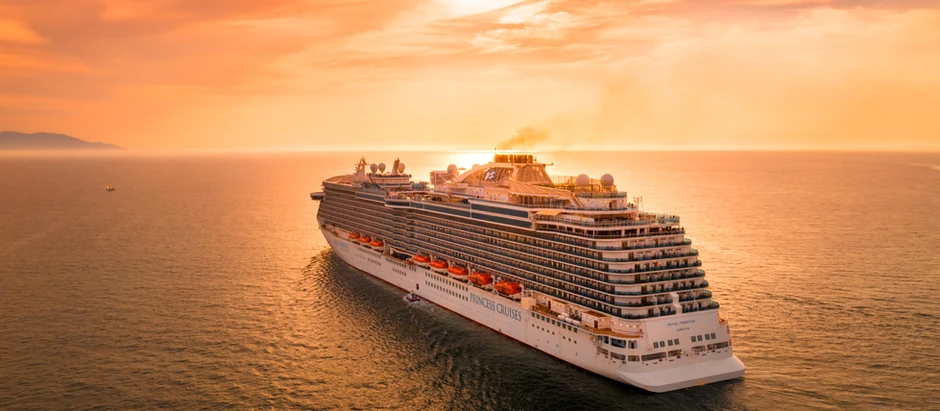Working on cruise ships for 20 years, I’ve seen first-time cruisers make every mistake in the book—from seasickness disasters to spending half their budget on overpriced drinks.
Want to do it right from day one? Here’s what real cruise insiders want you to know.
1. Pick your cabin like a pro
Where you sleep can make or break your trip.
✔ Midship cabins = smoothest ride. If you worry about seasickness, avoid the front and back of the ship.
✔ Avoid cabins near stairwells, lifts, or nightclubs—unless you like waking up to drunk people loudly discussing karaoke.
✔ Balcony vs. interior: If you just need a place to sleep, an interior cabin saves you £100s. But if you love fresh air and ocean views, it’s worth paying extra for a balcony.
💡 Crew tip: If your ship isn’t full, go to guest services on day 2—you might score a free upgrade.
2. Learn the ship’s layout fast
I’ve lost count of the number of people who spend half their trip lost.
✔ Use landmarks to navigate. On most ships, buffets are at the back and theatres are at the front—that alone saves you time.
✔ Take the stairs when possible. Lifts get packed at peak times (like after dinner)—you’ll wait 15 minutes just to go two decks.
✔ Grab a deck plan from reception on day one. Your phone’s ship app or Wi-Fi may be slow, so a paper copy is handy.
💡 Crew tip: Even-numbered cabins are usually on one side, odd on the other—helps when you’re finding your room after a few cocktails.
3. Master cruise dining without overpaying
I’ve seen people spend £100s in specialty restaurants without realizing how much good food is already included.
✔ The main dining room is free—you don’t need to eat at fancy restaurants to get a great meal.
✔ Buffets are your best bet for variety—but go outside peak hours (avoid the rush between 8-10am and 6-8pm).
✔ Specialty dining hacks: Most cruise lines let you upgrade certain dishes in the main dining room—so if you fancy lobster or filet mignon, you can usually get it for a small fee (£10-£20) instead of paying £50+ in a specialty restaurant.
💡 Crew tip: Order room service breakfast (free on most ships) and eat on your balcony. No crowds, no waiting.
4. Pack smart—because cabins are tiny
I once saw a couple bring four massive suitcases… for a 5-day cruise. They had nowhere to store them.
✔ Use packing cubes—they save space and keep things organized.
✔ Pack a power strip—cabins never have enough plug sockets.
✔ Bring a carry-on with essentials (swimsuit, meds, phone charger). Your checked bags might not arrive in your cabin until evening.
💡 Crew tip: Magnetic hooks are a lifesaver. Cabin walls are metal, so you can hang clothes, hats, and lanyards to keep things organized.
5. Don’t get ripped off on shore excursions
I’ve seen people pay £100+ for a ship-sponsored tour that they could’ve done for £20.
✔ Ship excursions are convenient, but pricey. If you book privately, you often get the same tour for half the price.
✔ Public transport is your friend. In many ports, a local bus or ferry costs £2-£5 instead of a £40 taxi ride.
✔ Always check return times. If you book an independent tour, make sure you’re back at least 90 minutes before the ship leaves.
💡 Crew tip: If you want zero stress, book excursions through the ship. They’ll wait for you if there’s a delay—but if you’re doing it alone, they won’t hold the ship.
6. Make the most of free entertainment
New cruisers always miss out on some of the best onboard events because they don’t read the schedule.
✔ Check the daily newsletter (or app). Free wine tastings, game shows, and live music are easy to miss.
✔ Shows fill up fast—go 20-30 minutes early if you want a good seat.
✔ Want a quiet pool? Skip the main deck. Adults-only pools and spa areas are usually much calmer.
💡 Crew tip: Comedy shows and live music in bars are often better than main theatre shows—and you don’t need reservations.
7. Stay healthy—cruise germs spread fast
The “cruise flu” is real. Don’t be the one spending 3 days in bed because you didn’t wash your hands.
✔ Sanitize before eating. Ships provide hand sanitizer everywhere—use it.
✔ Avoid buffet serving utensils when possible. If there’s a crew member serving food, let them dish it up for you.
✔ If you get seasick, go outside. Fresh air and looking at the horizon help more than meds.
💡 Crew tip: Green apples and ginger ale help with nausea. If you feel sick, ask the bar staff—they’ll usually have some.
8. Get your tipping right
First-timers are often confused about tipping on cruises—some don’t even realize it’s added to your bill.
✔ Most cruise lines charge £10-£15 per person, per day in gratuities. You can adjust this at reception if needed.
✔ Cash tips for your cabin steward = better service. £10-£20 at the start of the trip can mean extra perks.
✔ Bartenders remember good tippers. If you want faster drinks, tip upfront.
💡 Crew tip: If you’re in a large group, check your bill—gratuities may already be included in drinks. No need to double tip.
9. Watch your spending—onboard charges add up fast
New cruisers often end up shocked when they see their final bill.
✔ Check your account daily. Most ships let you view charges on the cabin TV or an app.
✔ Drink packages only make sense if you drink a lot. If you won’t have 5+ drinks per day, it’s cheaper to pay as you go.
✔ Wi-Fi is slow and expensive. If you don’t need it, don’t buy it.
💡 Crew tip: Some ports have free Wi-Fi at cafes—buy a coffee and catch up on messages.
10. Disembark like a pro
Getting off the ship can be slow and stressful—unless you know what to do.
✔ Self-disembarkation = fastest option. If you can carry your own bags, you get off first.
✔ Have transport booked in advance. Taxis at cruise terminals get expensive fast—pre-book a transfer.
✔ Wait in a lounge or quiet bar instead of queuing.
💡 Crew tip: Late flights? Many cruise ports offer luggage storage—drop your bags and explore the city before heading to the airport.



